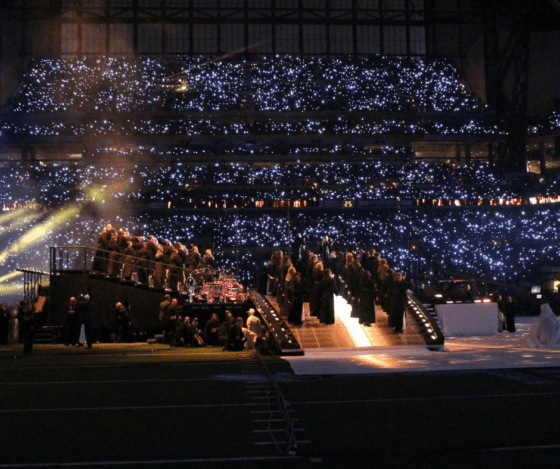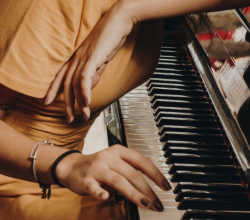Content Guide
It is fair to say that there are few moments in music than can rival that of the Super Bowl Halftime show; you would struggle to find a bigger event. Moreover, it is a spectacle watched worldwide that combines music, sports, and pop culture into an unforgettable experience that can shape an artist’s career and their legacy. But with this immense visibility comes enormous pressure, and for a lot of artists, it can sometimes feel like a high-stakes gamble. Therefore, I will investigate whether the Super Bowl Halftime Show is a chance that drives musicians into a new stratosphere of recognition and prosperity, or if, as some detractors contend, career suicide and should be avoided at all costs?
The Power and the Pressure of the Halftime Stage
The Super Bowl Halftime Show is one of the most watched musical performances worldwide and it often draws millions of viewers across various platforms. Consequently, with so much attention, artists have an unmatched platform to present their skills to an audience far beyond their usual fan base. It’s a chance to expand their reach massively, boost streaming numbers, and potentially attract lucrative brand deals; which it often does.
However, the stakes are very high. The performance is scrutinized not only by fans but by the media, critics, and even casual observers. Additionally, while many artists thrive on the big stage, some find themselves floundering under the intense spotlight; that must be tough! So much so, the question arises: is the risk of failure too great to justify the rewards which come from playing at one of the biggest events in the sporting calendar?
Case Studies: Success and Struggle
The Success Stories
Many musicians have had a defining moment in their careers from the Super Bowl Halftime Show. Still regarded as one of the most memorable halftime presentations in Super Bowl history is Beyoncé’s 2013 performance. Her electrifying show, coupled with a surprise reunion with Destiny’s Child, solidified her position as one of the most powerful figures in contemporary music. After her performance, her album sales spiked, and she was catapulted into an even higher echelon of superstardom.
Similarly, Shakira and Jennifer Lopez’s 2020 performance brought attention to both their enduring talent and their ability to engage a global audience. Their show wasn’t just a musical performance but a celebration of culture and artistry. Following the event, both artists saw a surge in streams, ticket sales, and social media engagement, reinforcing the idea that the Super Bowl could provide an artist with a renewed cultural relevance.
The Struggles
Yet, not every artist comes out unscathed from the Halftime Show. Maroon 5’s 2019 performance, while technically proficient, was criticized for being lackluster, with some viewers accusing the band of playing it too safe. Despite Maroon 5’s ongoing popularity, some saw the performance as a lost chance with a lot of disappointed viewers and critics; it probably did more harm than good for their career.
Then there’s the case of Janet Jackson and the infamous “wardrobe malfunction” during her 2004 performance with Justin Timberlake. The controversy surrounding the incident not only overshadowed her performance but has been widely believed to have harmed her career. In the years that followed, Jackson faced significant industry pushback, with radio stations boycotting her music and her career seeing a sharp decline. The lasting effect of this moment raises questions about the potential consequences of a negative experience during the Super Bowl.
The Changing Landscape of Music and Performance
The music industry today is vastly different from what it was in the past. With social media, streaming platforms, and digital marketing, an artist’s image can be built or broken in a matter of moments. The Super Bowl Halftime Show is no longer just a concert; it is a brand-building exercise. In a world where instant feedback from audiences and critics floods social media during and after performances, even the smallest misstep can be magnified.
In many respects, though, the internet era has helped artists bounce back from any negative impact quicker than before. Moreover, many musicians are able to minimise the effect of a less-than-perfect performance with smart social media plans and a devoted following.
But, Is It Worth the Risk?
Is the Super Bowl Halftime Show, then, a career-making or a career suicide event? The possibility for exposure and the potential to confirm their position in music history seems to some to be more than the risk of failure. Still, one should not make this choice with careful consideration. It is a high-stakes offer given the great pressure and the possibility of a mistake defining an artist’s career and it is likely it will not be forgotten in a hurry.
Ultimately, it comes down to the artist’s capacity to fit the expectations of the performance and their degree of openness to the limelight. While some might crumble under duress (We have seen that before) others will rise to the challenge and take their careers to even greater heights.
Conclusion On Super Bowl Halftime Show, Career Suicide?
The Super Bowl Halftime Show is a double-edged sword for artists and for some artists, it is a moment of reinvention and validation which can propel them to new heights of success and recognition. Nevertheless, for others, it can be a cautionary tale of what can happen when the pressures of fame and perfection become too much to bear.
What are the best and worst Super Bowl halftime performances in your opinion? Let me know in the comment section below.
- Azizam Review – Ed Sheeran: Teddy Goes Persian [4/5] - April 10, 2025
- 10 Times Jack White Proved He Is the GOAT - April 8, 2025
- Olivia Belli – “Triune” Review: Dramatic Beauty [5/5] - April 2, 2025


I thought Kendrick was pretty good, any 1 agree?
Nope just you
can never hear them properly
That maroon 5 show was not the one
Haha, did you enjoy the 2025 show?